Travel on a Galápagos Islands Luxury Cruise
Discover Ecuador & Cruise the Galápagos Islands with A&K
Secluded some 600 miles off the Ecuadoran coast, the Galápagos Islands offer a fascinating open-air wildlife museum that stirs the explorer in everyone. Home to an astonishing variety of endemic species, the archipelago is also one of the few places on earth where adventurers can encounter unafraid wildlife up close.
New for 2025, our Ecoventura adventure yachts offer three new ways to experience the Galápagos Islands in unparalleled style and luxury. Whether you choose our new Luxury Expedition Cruise, a ready-to-book Luxury Tailor Made journey of the Northern & Western or Southern & Central Routes, or a private charter of the ship, these vessels elevate your Galápagos cruising experience to all new heights. You can also explore two of South America’s most enchanting destinations with our Wonders of the Galápagos & Machu Picchu Luxury Small Group Journey. The choice is all yours.
Best Time To Go
Year-RoundClimate Charts
Time Zone
ETFlights
Quito (UIO); Guayaquil (GYE)Ways to Experience Luxury Galápagos & Ecuador Travel

Galápagos & Ecuador Small-Group Tours
On our Luxury Small Group Journeys to Ecuador and Peru, A&K’s acclaimed Resident Tour Directors® and expert local guides reveal the wonders of the Galápagos and Machu Picchu with authentic insider access you won’t find anywhere else.
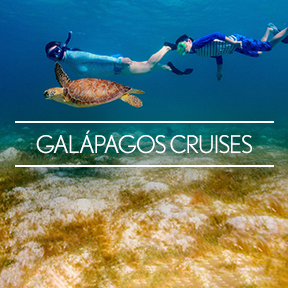
Galápagos Islands Small-Ship Cruises
On our new Luxury Expedition Cruise, explore the Galápagos aboard a stylish Ecoventura adventure yacht, enjoying the most exclusive guest-to-staff ratio in the region as you encounter iconic wildlife with A&K’s renowned Expedition Team.
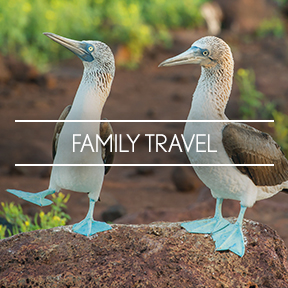
Family Galápagos & Ecuador Vacations
For the ultimate multi-generational adventure, travel together on an unforgettable luxury family vacation to the Galápagos and Ecuador with an exclusive charter of one our sleek and stylish Ecoventura adventure yachts.

Tailor Made Galápagos & Ecuador Tours
Elevate your travel experience with a Luxury Tailor Made journey of the Galápagos Islands’ Northern & Western or Southern & Central Routes bookended with private touring of mainland Ecuador’s most enchanting sites.
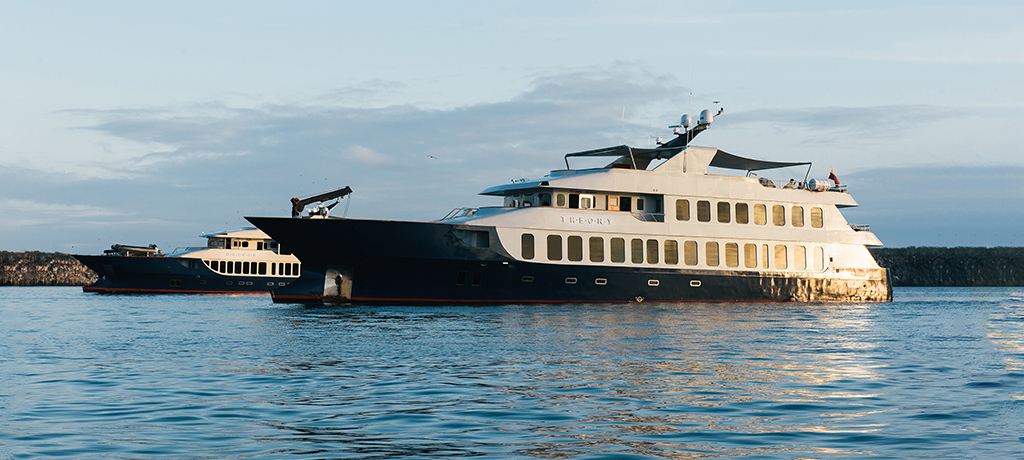
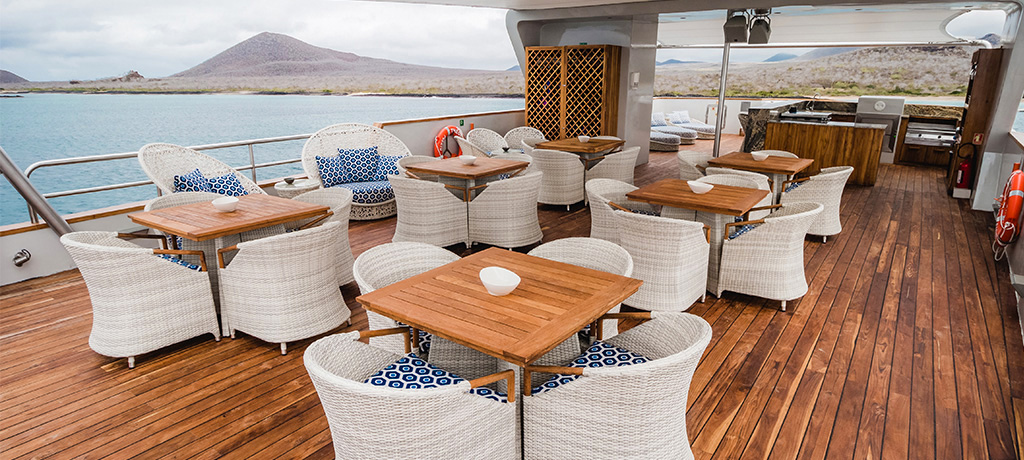

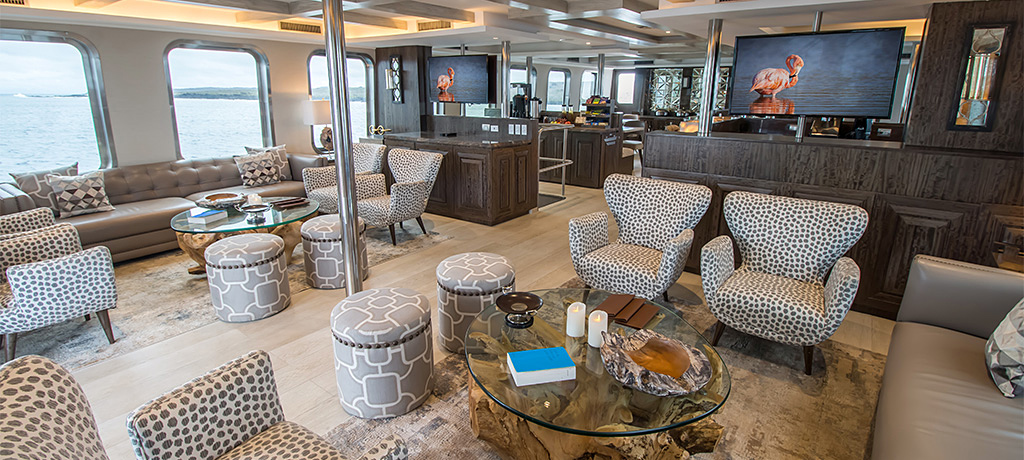
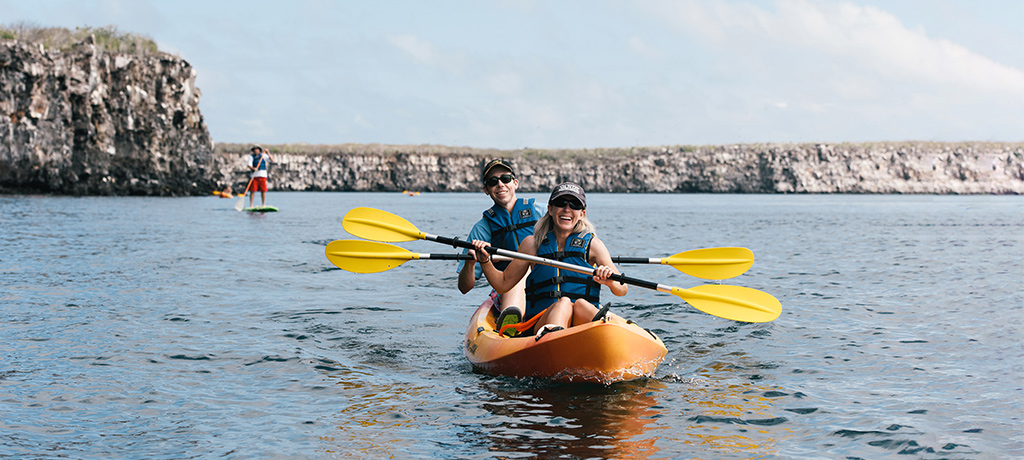 View Image Gallery (15)
View Image Gallery (15)
Step Aboard an Ecoventura Adventure Yacht for the Ultimate Galápagos Experience
Members of the esteemed Relais & Châteaux collection, our Ecoventura adventure yachts, Origin, Theory and Evolve accommodate up to 20 guests and a crew of 13 for the most exclusive and intimate cruising experience in the Galápagos. Whether you choose our Luxury Expedition Cruise, a Luxury Tailor Made journey of the Northern & Western or Southern & Central Routes, or a private charter of the vessel, these three vessels afford the finest cruising experiences in the Galápagos Islands, bar none.
Explore More of Luxury Galápagos & Ecuador with A&K
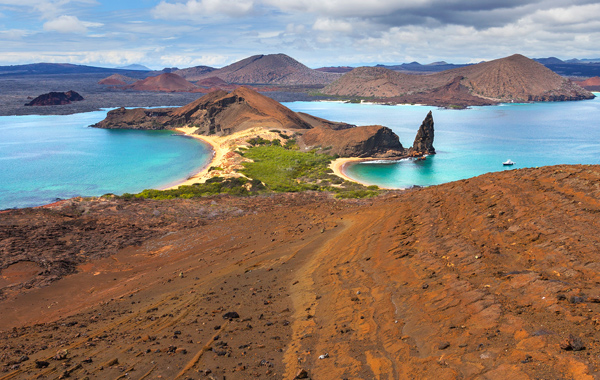
The 7 Best Galápagos Islands
The volcanic archipelago features an assortment of unique and strangely beautiful islands. Our experts narrow down the best-of-the-best to see on your Galápagos cruise.
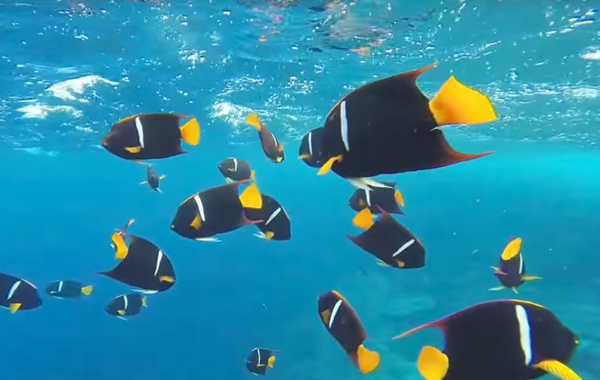
Video: Snorkel the Galápagos
Join us 600 miles off the coast of Ecuador for a dive in the spectacular waters of the Galápagos, meeting with sea lions, sharks, rays and turtles, and exploring one of the most magical places on the planet.
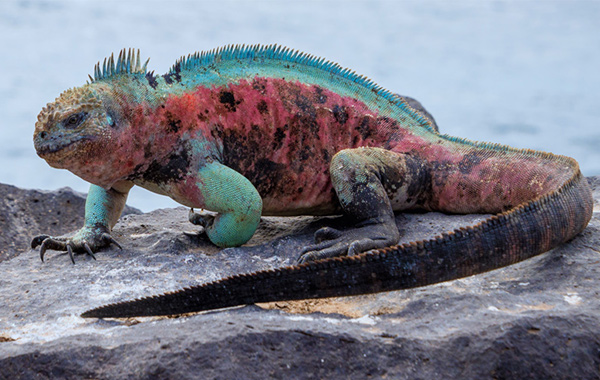
The Galápagos’ Top 10 Animals
Not your typical tropical paradise, the Galápagos is home to extraordinary wildlife not found anywhere else on earth. Put these 12 animals at the top of your must-see list.
Frequently Asked Questions
-
When is the best time to visit Galápagos?
Though its islands can be enjoyed all year round, one of the best times to visit the Galápagos is during the warm (or green) season from December to May. This is the most popular time to visit with mostly sunny days, temperatures ranging from the 70s to the upper 80s, and typically calmer conditions at sea, which makes for excellent visibility for snorkeling and diving. The sometimes overlooked cool (or dry) season from June to November is also an excellent time to visit the Galápagos, with average temperatures still pleasant and topping out in the mid 70s, typically dry conditions and a surge in large marine life that make it an ideal time to spot dolphins and whales.
-
What islands should I visit in the Galápagos?
The Galápagos archipelago offers an explosion of stunning geology, flora and fauna across more than a dozen main islands. When you visit the Galápagos, our experts recommend narrowing it down to these top seven islands: Isabela, the largest of the islands and home to the Galápagos penguin; Genovesa for Darwin Bay Beach and the cliff-top Prince Philip’s Steps; wildlife-packed Española for dramatic coastal views and a large colony of sea lions; Floreana for a visit to historic Post Office Bay, mangrove exploration and excellent snorkeling at the Devil’s Crown; Fernandina, where the flightless cormorant and black lava formations are the stars; Bartolomé, the most photographed of the islands for its famous Pinnacle Rock; and Santa Cruz with its surprising port town and giant tortoises in lush highlands.The Galápagos archipelago offers an explosion of stunning geology, flora and fauna across more than a dozen main islands. When you visit the Galápagos, our experts recommend narrowing it down to these top seven islands: Isabela, the largest of the islands and home to the Galápagos penguin; Genovesa for Darwin Bay Beach and the cliff-top Prince Philip’s Steps; wildlife-packed Española for dramatic coastal views and a large colony of sea lions; Floreana for a visit to historic Post Office Bay, mangrove exploration and excellent snorkeling at the Devil’s Crown; Fernandina, where the flightless cormorant and black lava formations are the stars; Bartolomé, the most photographed of the islands for its famous Pinnacle Rock; and Santa Cruz with its surprising port town and giant tortoises in lush highlands.
-
How many nights should I plan for a Galápagos cruise?
Aim for a Galápagos cruise that offers a minimum of four nights at sea or an ideal length of six to seven nights. The Galápagos archipelago is incredibly diverse and each of its main 13 islands totally unique, so you'll want plenty of time to fully experience its rare wildlife and best islands.Aim for a Galápagos cruise that offers a minimum of four nights at sea or an ideal length of six to seven nights. The Galápagos archipelago is incredibly diverse and each of its main 13 islands totally unique, so you'll want plenty of time to fully experience its rare wildlife and best islands.
-
What kind of wildlife can be seen in the Galápagos?
A protected ecosystem, the Galápagos Islands offer a magical wildlife refuge complete with rare and unafraid endemic species found nowhere else on the planet. Some of the top animals you may see in the Galápagos are sunbathing sea lions, skittering Sally Lightfoot crabs and dozing marine iguanas. In May, Galápagos green sea turtles hatch their eggs and offer a prime time to view the turtle hatchlings as they set out for the sea. On the island of Santa Cruz, look for lumbering tortoises roaming in its lush highlands. Bird lovers will be gobsmacked by brilliant species that include the famed Darwin’s finch, magnificent frigate bird, blue-footed boobie, Galápagos flamingo, flightless cormorant with its shocking blue eyes, waved albatross and — for penguin lovers — the Galápagos penguin. The biodiverse waters that surround the Galápagos Islands are also home to vibrant fish, rays, whales, dolphins and hammerhead sharks, to name just a few.A protected ecosystem, the Galápagos Islands offer a magical wildlife refuge complete with rare and unafraid endemic species found nowhere else on the planet. Some of the top animals you may see in the Galápagos are sunbathing sea lions, skittering Sally Lightfoot crabs and dozing marine iguanas. In May, Galápagos green sea turtles hatch their eggs and offer a prime time to view the turtle hatchlings as they set out for the sea. On the island of Santa Cruz, look for lumbering tortoises roaming in its lush highlands. Bird lovers will be gobsmacked by brilliant species that include the famed Darwin’s finch, magnificent frigate bird, blue-footed boobie, Galápagos flamingo, flightless cormorant with its shocking blue eyes, waved albatross and — for penguin lovers — the Galápagos penguin. The biodiverse waters that surround the Galápagos Islands are also home to vibrant fish, rays, whales, dolphins and hammerhead sharks, to name just a few.
-
Are there other things to see and do in the Galápagos besides wildlife?
The Galápagos Islands are famed for their rare and endemic animals, but there’s more to see and do beyond wildlife encounters. The islands themselves were formed entirely by volcanic eruption and offer a spectacular look at plant life and volcanic geology, with each island vastly different and defined by such features as rugged cliffs, fields of black lava formations, rainforest-like highlands and gorgeous white-sand beaches. The Galápagos Islands also feature a few surprising port towns, namely lively Puerto Ayora on Santa Cruz, where you find a buzzy waterfront, galleries, shops, restaurants and cafes.The Galápagos Islands are famed for their rare and endemic animals, but there’s more to see and do beyond wildlife encounters. The islands themselves were formed entirely by volcanic eruption and offer a spectacular look at plant life and volcanic geology, with each island vastly different and defined by such features as rugged cliffs, fields of black lava formations, rainforest-like highlands and gorgeous white-sand beaches. The Galápagos Islands also feature a few surprising port towns, namely lively Puerto Ayora on Santa Cruz, where you find a buzzy waterfront, galleries, shops, restaurants and cafes.
-
Do I need a visa to visit the Galápagos?
Holders of U.S. and Canadian passports are not required to obtain a tourist visa for entry into Ecuador for stays of up to 90 days.Holders of U.S. and Canadian passports are not required to obtain a tourist visa for entry into Ecuador for stays of up to 90 days.
 The Americas
The Americas Europe, Middle East and Africa
Europe, Middle East and Africa Australia, NZ and Asia
Australia, NZ and Asia







 The Americas
The Americas
 Europe, Middle East and Africa
Europe, Middle East and Africa Australia, NZ and Asia
Australia, NZ and Asia